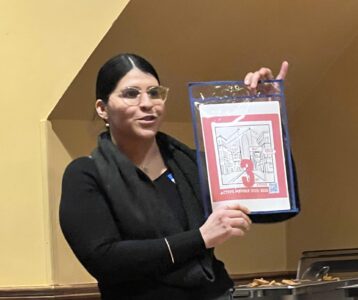BY HEATHER J. CHIN AND AMANDA GLODOWSKI
The act of hailing a taxi is no longer exclusive to Manhattan tourists and city slickers. On Thursday, June 6, the Court of Appeals—the state’s highest court—made a unanimous decision to give the green light to the Five Boro Taxi Plan. The plan had previously been blocked by the New York State Supreme Court back in August of 2012.
So now, there will soon be hail livery service in the “outer boroughs” of Brooklyn, Queens, the Bronx, Staten Island, and in Manhattan north of 96th Street.
A start date has not yet been set for the program and details about implementation are not yet available.
What is known thus far is that the color of the new taxis will be Granny Smith Apple Green and there will be a smartphone app that allows people to hail taxis at the touch of a button.
Elected officials such as Manhattan Borough President hail the plan as making it “as easy to hail a cab in East Flatbush as it is on the Upper East Side,” and Mayor Michael Bloomberg touts the creation of the city’s “e-hail program” as “common sense and the free market” coming into play.
Opposing the plan is David Yassky, commissioner and chairperson of the Taxi and Limousine Commission (TLC), who said that the decision was “a great loss to millions of New Yorkers outside of Manhattan, as well as for the professional livery drivers whose ability to feed their families by providing a popular service their communities want and deserve is now in jeopardy.”
On accessibility and enforcement
On the ground in Brooklyn, the news of the green light for the Five-Boro Taxi Plan met with mixed reactions from community leaders and residents, some of whom are simultaneously enthusiastic yet concerned about enforcement and accessibility.
Morris Sacks, the Traffic and Transportation Committee Chair at Community Board 14 (Flatbush, Midwood, Kensington), said the Plan’s benefits depend on whether or not “all the illegitimate street hails were prevented from operating.
“Enforcement is key, but otherwise, it’s a very positive thing,” said Sacks, who used to work as a yellow taxi driver. “The money used to be made in Manhattan and that’s why we have a lack of it in outer boroughs, but [now] in busy commercial streets, there is definitely demand. If it’s regulated, it’s a definite benefit.”
Richard Mazur, executive director of the North Brooklyn Development Corporation, shared the sentiment, noting that he remembers “when you would catch a cab in Manhattan and they wouldn’t go to Greenpoint—it didn’t matter who you were or how you were dressed. Now, you can actually catch a cab in Greenpoint.”
According to Craig Hammerman, district manager for Community Board 6, when the TLC first presented their plan, Park Slope and Carroll Gardens residents were generally receptive, but curious about the logistics of how it would be implemented.
“So we will be inviting them to come out and give us an opportunity to brief us on what the implementation of the plan will look like,” said Hammerman. “When can and can’t we hail a cab and under what circumstances? What is hailing a cab versus car service versus an illegal cab service going to look like from an enforcement standpoint?”
Another question is that of wheelchair accessibility. The city’s current plan is to sell 2,000 medallions for wheelchair-accessible yellow taxicabs, which is expected to address concerns by disability rights advocates while creating $1 billion in revenue in the upcoming years for the city.
However, this isn’t enough to address the needs of physically disabled New Yorkers, said Jean Ryan of Bay Ridge, who said that while she isn’t against the plan, she has doubts about its implementation, reliability, and ability to get to riders in a timely manner.
“I would prefer that all of them be wheelchair-accessible because it will still be difficult to get [taxis] and have reliable transportation if the city doesn’t tell us which livery bases have the few accessible vehicles available,” Ryan explained. “Will they tell us now and in the future when cars are available? Cabs will only be at hospitals, malls, maybe commercial streets, but not where most people actually live.”
“Also, rightly, those wheelchair-accessible vehicles will still be able to be ridden by everybody,” thereby limiting the number available for people with actual wheelchairs, walkers and some disability,” she noted. “That’s why I think they should all be accessible. Then anyone could hail one and there would be no difficulty for any group.”

 On the Avenue: Art Walk on 3rd part of Embrace Winter Festival!
On the Avenue: Art Walk on 3rd part of Embrace Winter Festival!  On the Avenue: Merchants offer full calendar of exciting events!
On the Avenue: Merchants offer full calendar of exciting events!